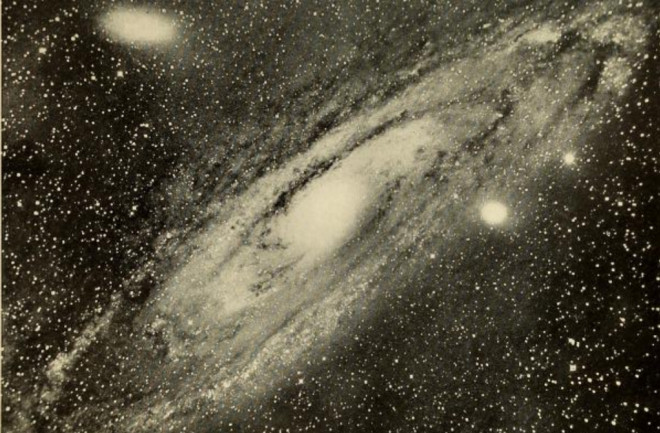What’s in a date? Strictly speaking, New Year’s Day is just an arbitrary flip of the calendar, but it can also be a cathartic time of reflection and renewal. So it is with one of the most extraordinary dates in the history of science, January 1, 1925. You could describe it as a day when nothing remarkable happened, just the routine reading of a paper at a scientific conference. Or you could recognize it as the birthday of modern cosmology–the moment when humankind discovered the universe as it truly is.
Until then, astronomers had a myopic and blinkered view of reality. As happens so often to even the most brilliant minds, they could see great things but they could not comprehend what they were looking at. The crucial piece of evidence was staring them right in the face. All across the sky, observers had documented intriguing spiral nebulae, swirls of light that resembled ghostly pinwheels in space. The most famous one, the Andromeda nebula, was so prominent that it was easily visible to the naked eye on a dark night. The significance of those ubiquitous objects was a mystery, however.
Some researchers speculated that the spiral nebulae were huge and distant systems of stars, “island universes” comparable to our Milky Way galaxy. But many others were equally convinced that the spirals were small, nearby clouds of gas. In this view, other galaxies–if they existed–were far out of sight, blue whales lurking in the far depths of the cosmos. Or perhaps there were no other galaxies at all, and our Milky Way was all there was: a single system that defined the entire universe. The dispute between the two sides was so intense that it prompted a famous 1920 Great Debate … which ended with an unsatisfying draw.


